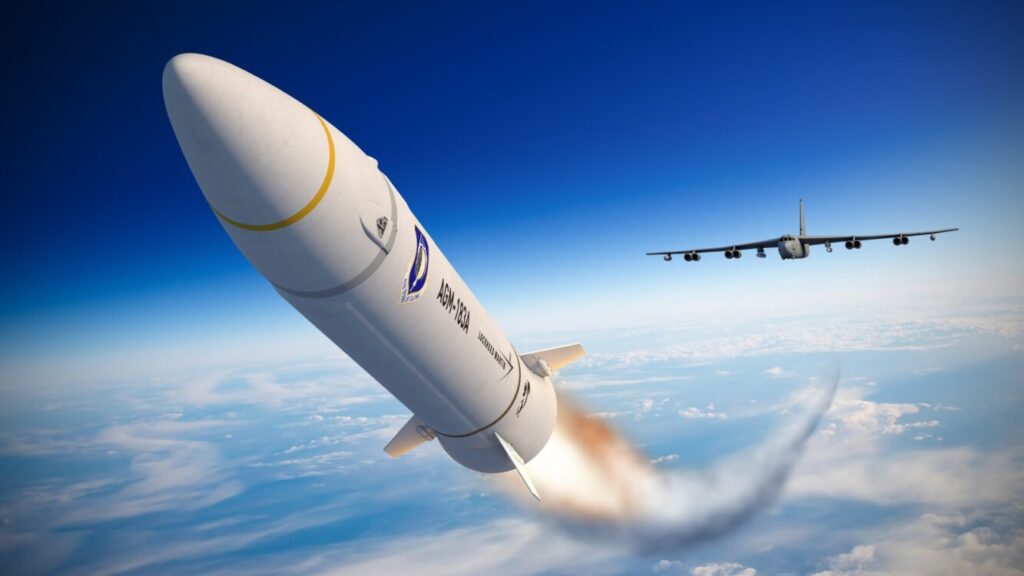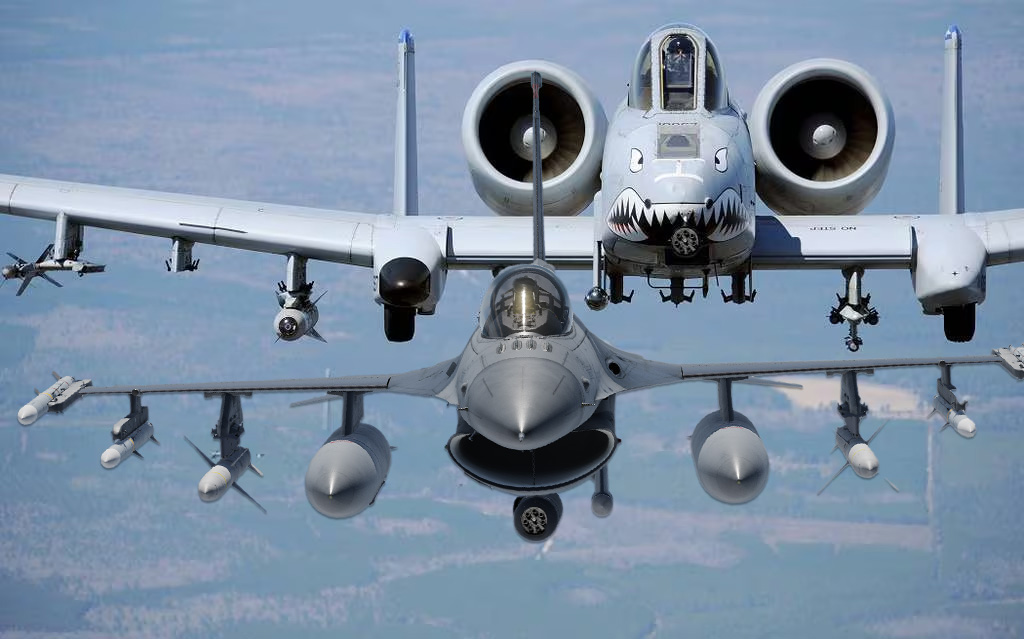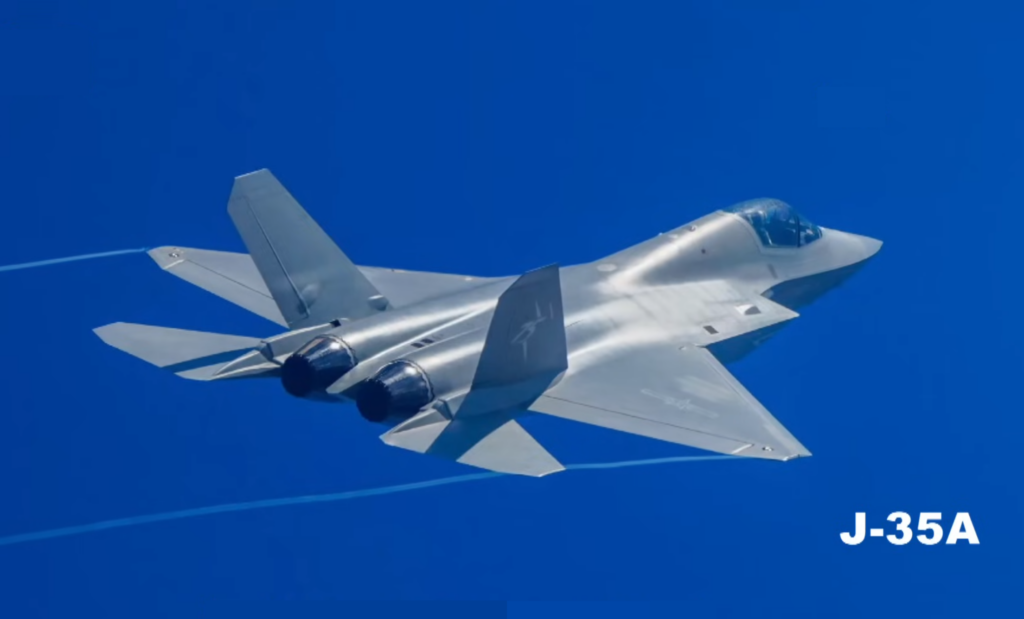Was the Air Force’s hypersonic ARRW missile killed by a rush to save face?
- By Alex Hollings
Share This Article

After yet another testing failure announced last week, the Air Force no longer intends to push its first hypersonic missile, the AGM-183 Air-Launched Rapid Response Weapon (ARRW), into production. This marks a significant setback in America’s efforts to close the perceived capability gap between itself and Russia and China.
The ARRW missile had seen seven publicly disclosed test launches since 2021, with four of those tests ending in complete failure. But while failures are to be expected during the development of advanced new weapon systems, ARRW’s testing woes came during portions of the testing regime that one wouldn’t expect issues — like separating from the launching aircraft or getting the engine to fire in the first place.
These failures point toward overarching issues with the ARRW program, both in terms of its intended goals and the rush to put it into service. And that rush, evidence suggests, was not based on the weapon’s demonstrated capabilities, suggesting it may have been placed on the fast track toward service for political, rather than strategic reasons.
With the apparent failure of the ARRW program, the Air Force’s next hypersonic hopes fall to the scramjet-powered Hypersonic Attack Cruise Missile (HACM) slated to enter service as soon as 2027, with a massive list of U.S. hypersonic programs following closely behind.
Despite ARRW’s fate, the Air Force still has two test models of the weapon left that it intends to fire in follow-on tests, though these tests will be largely for the benefit of future programs, rather than efforts to mature ARRW toward a production contract.
“There is an inherent benefit to completing All-Up Round (AUR) test flights … to garner the learning and test data that will help inform future hypersonic programs and potential leave-behind capability,” Air Force acquisition executive Andrew Hunter wrote in a testimony delivered to the House Armed Services Committee on March 29.
Related: Is America losing the hypersonic arms race?
The start of the hypersonic arms race

Development on the AGM-183 began in August of 2018, just six months after Russian President Vladimir Putin gave a speech that many see as the onset of today’s hypersonic arms race. In his speech, Putin declared that Russia was placing the world’s first two modern hypersonic weapons into service, in the Kh47M2 Kinzhal and the Objekt 4202, or Avangard, nuclear HGV (Hypersonic Glide Vehicle).
Hypersonic weapons are often characterized as missiles that are capable of flying at speeds higher than Mach 5, but that’s technically a misnomer. The truth is, missiles have been flying faster than Mach 5 for more than a half-century now. In terms of sheer speed alone, ballistic missiles have been hypersonic since their very inception, with Nazi Germany’s V-2 rockets reaching Mach 4.3 during their ascent and then exceeding Mach 5 as they closed with their targets.
Since then, practically all ballistic missiles, rockets, and spacecraft have achieved hypersonic speeds. In fact, even America’s massive Cold War air-to-air missile, the AIM-54 Phoenix, was believed to be hypersonic if leveraged with a ballistic flight path toward the ground — a concept that was proposed for testing but never fully manifested.
While intercepting ballistic missiles moving at these speeds has long been an incredible challenge — it’s one many air defense systems around the world have demonstrated a propensity for in the years since the first V-2s started flying.
What makes modern hypersonic weapons special isn’t their speed alone — but the addition of maneuverability when flying at those extreme speeds.
Modern air defense systems intercept inbound hypersonic ballistic warheads by tracing their flight path and then calculating the remainder of their trajectory. The system then launches a missile of its own at a point in that predicted flight path to intercept the inbound missile, like leading a receiver when throwing a football. Maneuverable hypersonic weapons render these calculations moot by changing course mid-flight, which, at such high speeds, makes calculating a new intercept all but impossible.
Russia’s Kinzhal later proved to be little more than an air-launched variant of the long-serving Russian 9k720 Iskander short-range ballistic missile, fitted with a new air-to-ground guidance system, making it hypersonic in the same sense ballistic missiles have been since the first V-2’s made landfall 79 years ago. Avangard, on the other hand, appears to be an operational HGV in the truly modern sense.
With China’s hypersonic anti-ship weapon, the DF-ZF, already in testing as early as 2014, the United States recognized two distinct challenges posed by this new influx of maneuvering hypersonic weapons.
Related: How Russia fooled the world about its ‘hypersonic’ Kinzhal
The two hypersonic challenges ARRW was meant to face

The first challenge these new Russian and Chinese weapons represented was their strategic capabilities: Russia’s Avangard was expected to be able to deliver nuclear warheads to American soil regardless of America’s layered missile defenses; and China’s DF-ZF aimed at eliminating the force projection advantage American aircraft carriers provided in the Pacific.
The second challenge these systems created was more notional. As the world’s only remaining superpower since 1991, the U.S. has led the world in military technology for decades. But with these new systems in service by geopolitical rivals and no comparable weapons in American arsenals, the Pentagon recognized that it would soon face significant political and media pressure to match these advanced capabilities.
Seemingly immediately after Putin’s March 1 speech, the U.S. shifted its focus (and funding) away from its decade-spanning asymmetric conflicts with technologically inferior terrorist groups and toward cutting-edge tech.
No fewer than 70 hypersonic programs soon began drawing funds from the Pentagon’s lines of accounting, with some aimed at fielding similar hypersonic glide vehicles to Russia’s and China’s, others aimed at more technologically complex hypersonic cruise missiles, and a few seemingly even aimed at fielding fully-reusable hypersonic aircraft for intelligence, surveillance, and reconnaissance missions, as well as for delivering ordnance.
But while many of these systems for the Air Force, Army, and Navy called for lengthy R&D efforts, one program appeared closest to fruition by 2020: the Air Force’s AGM-183 ARRW effort. This air-launched HGV would offer the United States a response to both hypersonic challenges, with its intended capability set potentially serving as an answer to threats posed by Russian and Chinese systems, and an aggressively rapid timeline meant to neuter arguments about America falling behind the hypersonic curve.
Related: The secretive race to field America’s first hypersonic aircraft
The AGM-183 ARRW hypersonic missile

The AGM-183 Air-Launched Rapid Response Weapon, or ARRW, was a Lockheed Martin-led conventionally armed (non-nuclear) hypersonic glide weapon program aimed at fielding an air-to-ground missile capable of achieving sustained speeds between Mach 5 and Mach 8. The weapon was carried aboard the Air Force’s B-52 Stratofortress throughout testing, but in the long term, was slated to be carried by a variety of aircraft including the B-1B Lancer supersonic bomber, B-21 Raider, and the F-15E Strike Eagle.
Most of the weapon’s specifics remain somewhat murky, but the Congressional Research Service reports that it has an intended range of approximately 1,000 miles. The missile consists of a solid-fuel rocket motor, a protective shrowd, and the hypersonic glide vehicle (HGV) itself.
While Russia’s Avangard and China’s DF-ZF are both considered strategic deterrents — weapons that aren’t meant to be used so much as to serve as technologically advanced sabers to rattle when posturing — ARRW’s conventional warhead was meant to make it a part of America’s conventional airpower apparatus. In other words, while Russia and China sat on their hypersonic weapons, America wanted a missile it could use right away, providing new combat capabilities while shifting the popular narrative surrounding hypersonics back into Uncle Sam’s favor.
To that very end, the AGM-183 was classified as a Section 804 Rapid Prototyping Middle Tier of Acquisition program, building off of previous progress made by DARPA in the HGV realm. This means the ARRW missile was meant to reach initial operating service at practically hypersonic speeds.
Related: US doubled its hypersonic missile successes in the last 11 months
Rushing the ARRW’s development seems to have killed it

The Pentagon has yet to offer any definitive explanation for the ARRW missile’s failure, but some strong evidence can be found buried deep within the Director Operational Test and Evaluation’s 412-page Annual Report for Fiscal Year 2022, published in January. Just about halfway through the document, you can find a scathing review of the Air Force’s ARRW effort that suggests the weapon was not only being rushed into service too quickly, but that its testing schedule wouldn’t allow for adequate data to be collected in the first place.
“Despite being under DOT&E oversight for over four years, the AGM-183A Air Launched Rapid Response Weapon (ARRW) Program Office does not have a DOT&E-approved Integrated Master Test Plan nor has the Office submitted an Operational Demonstration Plan, but is proceeding to test the ARRW. The ARRW program has not yet demonstrated the required warfighting capability.”–Director Operational Test and Evaluation FY 2022 Annual Report
Within the three pages this report dedicates to the AGM-183 ARRW, you can find a number of prominent red flags. The DOT&E office took particular issue with the Air Force’s rapid approach to testing that seemed to be operating under the forgone conclusion that ARRW would function as advertised and ease right into service without any considerable hiccups.
“The limited number of planned flight hours and test assets (booster and AUR) will preclude an adequate assessment of all operational suitability metrics for the ARRW system during this phase of testing.”
As the report clearly shows, however, ARRW did not have the trouble-free path to service the Air Force expected. Arguably because of the speed in which this program matured, it faced technical hurdles in portions of the testing regime that most programs might take for granted.
The first ARRW flight test, which took place in April 2021, went wrong when the missile simply failed to separate from the launching aircraft. The second flight test in July 2021 ended after the missile separated from the aircraft and its solid-rocket motor failed to ignite. The third flight test failed when, according to the report, “low voltage caused a built-in-test fault upon application of power, causing the weapon to prevent launch.”
In other words, all three of ARRW’s failures to that point had all occurred before the missile’s engine had even fired. While further details about these failures are sparse, it’s hard to deny that this certainly looks like the result of rushing a platform into operational testing.
Related: Hypersonic hype overestimates modern missile defense capabilities
It looks as though ARRW was being rushed into service to save face, not to add capability.

As Sandboxx News has written at length, the modern hypersonic arms race isn’t quite what it’s been made out to be in media discourse. While the U.S., Russia, and China have all been rushing these new high-speed weapons into service, the weapons themselves demonstrate the very different finish lines each respective nation has in its sights.
While Russia views hypersonic weapons as a means to deter Western aggression with the threat of nuclear strikes, China’s hypersonic efforts are really an extension of its anti-access/area denial strategy in the Pacific. America’s conventionally-armed hypersonics, like the Hypersonic Attack Cruise Missile (HACM) are clearly focused instead on the ability to rapidly respond to a wide variety of potential threats across the world.
The nation that fields the first hypersonic weapons will win the headline race, but the nation that fields the right ones — the most capable, cost-effective, reliable, and strategy-based ones — may not win the headline race, but may just win the next big war.
Programs like the HACM, the Army and Navy’s combined efforts through the Conventional Prompt Strike program, the Air Force Research Lab’s Mayhem Program, and others all seem as though they embrace the concepts of fielding the right systems rather than just fielding any system for the sake of matching capabilities advertised by competitors.
But ARRW’s failure, and the shortcomings of its testing regimen, seem to suggest a different focus: one that prioritized saving face and securing hypersonic prestige over the strategic or tactical value of the system itself. That’s not to say that ARRW wouldn’t have proven extremely useful in 21st-century battlefields, but by putting concerns about perception ahead of capability, the Air Force seemingly doomed ARRW to an early demise.
It would seem, then, that the AGM-183 ARRW is a cautionary tale about the importance of keeping your eye on the strategic ball. Because when the focus of new weapons programs becomes appeasing the aggressive questioning of ill-informed politicians or responding to hyperbolic headlines about a modern-day arms race, the result will always be a disappointment.
But, it’s important to remember that the blame for ARRW’s shortcomings doesn’t fall on the Air Force or even Lockheed Martin alone. One could argue that the Pentagon doesn’t have the option to ignore those aggressive lawmakers and that public perception borne out of those headlines can dictate funding priorities for years to come. ARRW may have failed in the sky, but those failures were born thousands of feet below, where influential people demanded outcomes that weren’t in keeping with strategic need, and the Defense Apparatus rendered a somber salute and replied simply, “Yes sir.”
Feature image created by Alex Hollings using Lockheed Marting renders
Read more from Sandboxx News
Related Posts
Sandboxx News Merch
-

‘AirPower’ Classic Hoodie
$46.00 – $48.00 Select options This product has multiple variants. The options may be chosen on the product page -

‘Sandboxx News’ Trucker Cap
$27.00 Select options This product has multiple variants. The options may be chosen on the product page -

F-35 ‘Lightning’ Framed Poster
$45.00 – $111.00 Select options This product has multiple variants. The options may be chosen on the product page

Alex Hollings
Alex Hollings is a writer, dad, and Marine veteran.
Related to: Airpower

How US Special Forces took on Wagner Group mercenaries in an intense 4-hour battle

F-16s carrying the A-10’s 30mm cannon actually saw combat

How does China’s new J-35 stealth fighter compare to America’s F-35?

Why China’s new J-35 jet could mean trouble for America
Sandboxx News
-

‘Sandboxx News’ Trucker Cap
$27.00 Select options This product has multiple variants. The options may be chosen on the product page -

‘AirPower’ Classic Hoodie
$46.00 – $48.00 Select options This product has multiple variants. The options may be chosen on the product page -

‘AirPower’ Golf Rope Hat
$31.00 Select options This product has multiple variants. The options may be chosen on the product page -

‘Sandboxx News’ Dad Hat
$27.00 Select options This product has multiple variants. The options may be chosen on the product page
